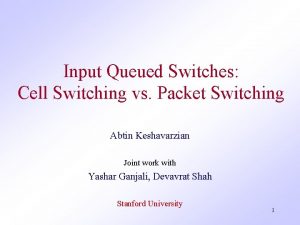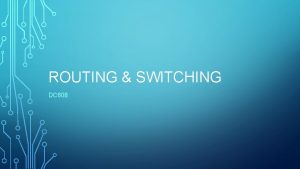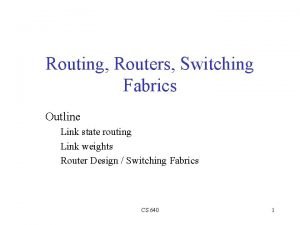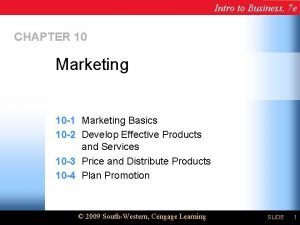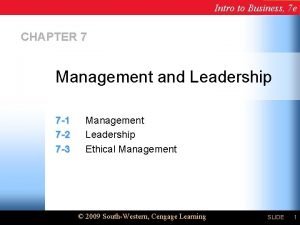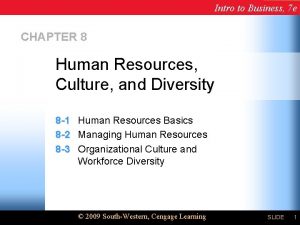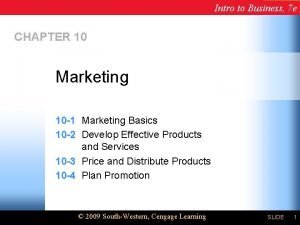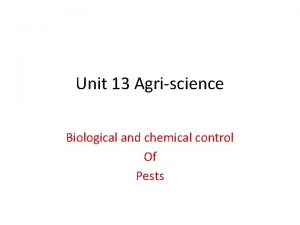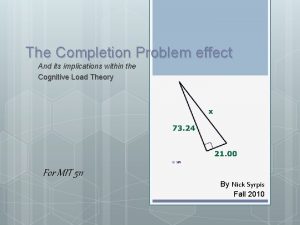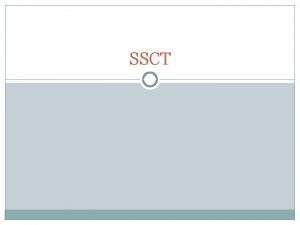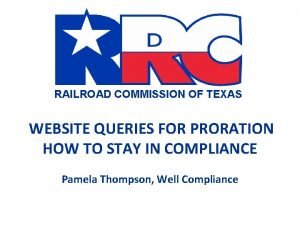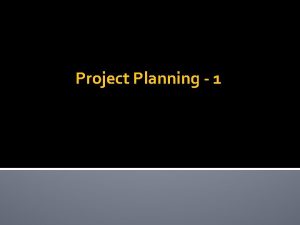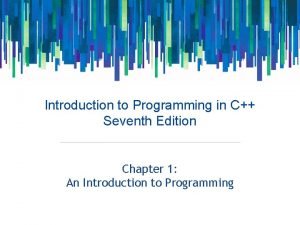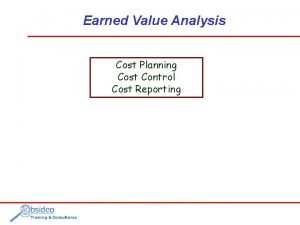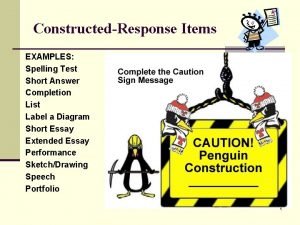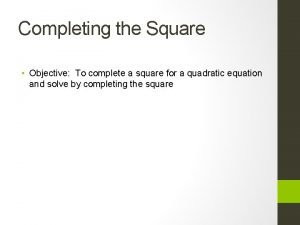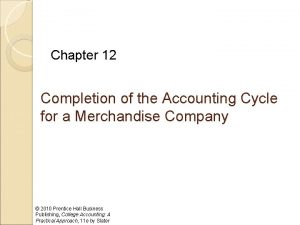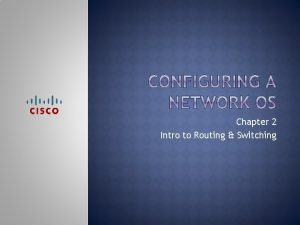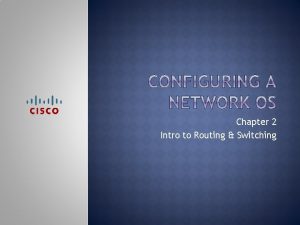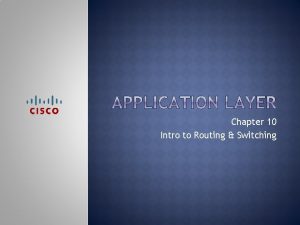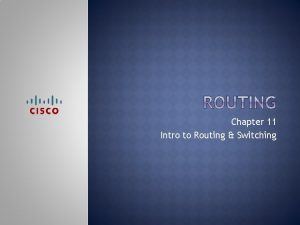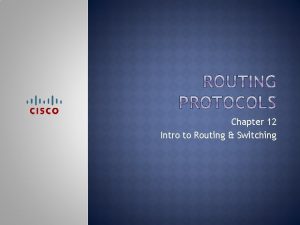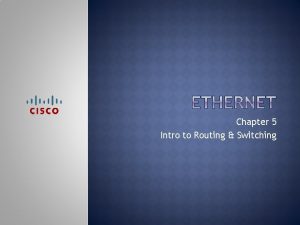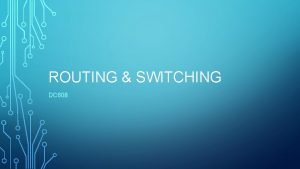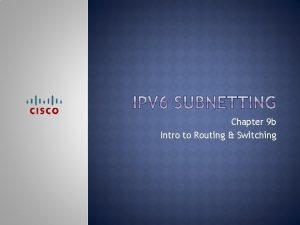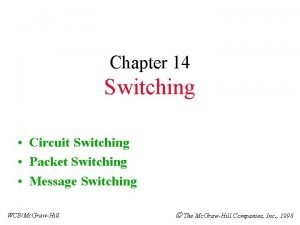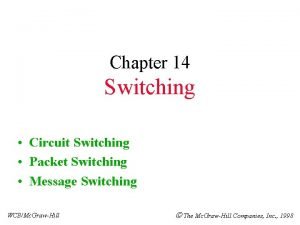Chapter 10 Intro to Routing Switching Upon completion









































- Slides: 41

Chapter 10 Intro to Routing & Switching

� Upon completion of this chapter, you should be able to: � Explain how the functions of the application layer, session layer, and presentation layer work together to provide network services to end user applications. � Describe how common application layer protocols interact with end user applications. � Describe common application layer protocols that provide Internet services to end-users, including WWW services and email. � Describe application layer protocols that provide IP addressing services, including DNS and DHCP. � Describe the features and operation of well-known application layer protocols that allow for file sharing services. � Explain how data is moved across the network, from opening an application to receiving data.

10. 1


� Provides the interface between the applications we use to communicate & the network � Used to exchange data between source & destination � What are some of the application layer protocols?

� Formats data so it can be read � Compress/decompress data � Encrypt/decrypt data � MPEG, JPG, GIF

� DNS �Names to IP addresses � Telnet �Remote access to servers/switches/routers/devices � DHCP �Automatically assign IP/SM/DG/DNS server addresses � BOOTP �Older version of DHCP

� HTTP �Transfers web pages � FTP �File transfer � SMTP �Transfers email � POP �Gets email from email server to client �Then deleted from server � IMAP �Gets email from email server to client �Kept on server until you delete it

� 10. 1. 1. 5

� What 3 OSI layers are similar to the TCP/IP Application Layer? �Application, Presentation, Session � What are 3 functions of the Presentation Layer? �Data formatting, compression, encryption � Name some application layer protocols. �DNS, DHCP, Telnet, POP, IMAP, SMTP, FTP, HTTP, BOOTP � What protocol �HTTP � What �FTP handles web transfer? protocol handles file transfer?

10. 1. 1

� 2 or more connected computers with NO SERVER �Shares files on each other’s HD & connected printers �Every device acts as client AND server �No one device in charge �No central user accounts

� P 2 P applications allow users to directly share specified file types across peer-to-peer or client-server networks.

� Bit. Torrent � Lime. Wire � No central server �Uses files found on client hard drives

� Client server requests a service from a dedicated

� What type of network has centralized resources, such as central file storage? �Client-server � What type of network shares resources located on local computer hard drives? �Peer to peer � You type www. gcit. org into your web browser. A DNS request is created and then a we request is sent. What type of network is this? �Client-server

10. 2. 1

� What application layer protocols would you use on a daily basis?

� http: //www. cisco. com/index. html �HTTP is the protocol �Cisco. com is the server name �Index. html is the document you requested

� Layer 4 port: �HTTP: 80 �HTTPS: 443 � Browser messages �GET (requests page from web server) �POST & PUT (uploads to web server) � HTTPS �Secure �Uses SSL to encrypt

� Layer 4 ports: �SMTP-25 �POP 3 - 110 �IMAP-143 � Send � Get mail to server & server to server; SMTP mail from email server; POP 3 & IMAP �POP deletes mail from server when sent to client �IMAP sends copy of email to client and server keeps mail until deleted

� PT Lab 10. 2. 1. 8 Web & Email �In this activity, you will configure HTTP and email services using the simulated server in Packet Tracer. You will then configure clients to access the HTTP and email services.

� Why would you use IMAP instead of POP? �IMAP keeps the emails until manually deleted � Which protocol uses GET, PUT, and POST? �HTTP � Which email protocol send you a copy of the email and deletes it from the server? �POP � What port # is POP? � 110 � What �SSL does HTTPS use to encrypt?

10. 2. 2

� Layer 4 port: 53 � Servers that translates names to IP addresses � DNS servers know some, forward rest to other DNS servers � Nslookup �Get in the mode and then enter domain � Ipconfig /displaydns �Displays cached DNS

� DNS servers are in a hierarchy �Top-level, most trusted: . com, . edu, . gov Contains 2 nd-level domain server records �Second-level: � MX Contains records for the company only used for mail

� Layer 4 port: 67/68 � At home, your router is a DHCP server � At work, you may have a dedicated DHCP server � Used for general purpose/PC devices �Static addressing for routers, switches, printers, Internet-accessible devices �DHCP addresses are leased


� PT Lab 10. 2. 2. 8 �DHCP & DNS Services �In this activity, you will configure and verify static IP addressing and DHCP addressing. You will then configure a DNS server to map IP addresses to the website names. � HW: Lab 10. 2. 2. 9 �Observing DNS �You will observe the DNS Conversion of a URL to an IP Address, observe DNS Lookup Using the nslookup Command on a Web Site, and observe DNS Lookup Using the nslookup Command on Mail Servers.

� Which broadcast message gets sent out from a PC to a DHCP server when it turns on? �DCHPDiscover � What does the DHCP server send back to the PC? �DHCPOffer � What �All � Who does the DHCP request look like? 255’s gets & responds to that request? �Everyone in local network gets it; only DHCP server responds

10. 2. 3

� Layer 4 port: 20/21 � 20 - data � 21 - control info � Download/upload data from a server �Example: sending a designed web page to the web server


� Server Message Block �Client-server file sharing protocol for file, printer, and directory sharing �Used for long-term connections to keep connection active �Authenticates the session � Example: �Use SMB (instead of FTP) when downloading a TON of files from a server

� PT Lab 10. 2. 3. 2 �In this activity, you will configure FTP services. You will then use the FTP services to transfer files between clients and the server.

� What program runs on an FTP server that listens for requests? �FTPdaemon � What runs on a PC that will request services from an FTP server? �FTP � If Client software you need to download many files from a server, which could take hours, which protocol would you use? �SMB

� Which command did you use to manually get the name to IP information? �nslookup � What port is HTTPS? � 443 � What type of applications need a specific application interface and background service running between hosts? �P 2 P application, like IM

� Applications are computer programs with which the user interacts and which initiate the data transfer process at the user’s request. � Services are background programs that provide the connection between the application layer and the lower layers of the networking model. � Protocols provide a structure of agreed-upon rules and processes that ensure services running on one particular device can send and receive data from a range of different network devices

� HTTP supports the delivery of web pages to end devices � SMTP, POP, and IMAP support sending and receiving email � FTP enable users to share files � P 2 P applications make it easier for consumers to seamlessly share media � DNS resolves the human legible names used to refer to network resources into numeric addresses usable by the network � All of these elements work together, at the application layer. � The application layer enables users to work and play over the Internet.

� Complete � Take the study guide handout the quiz on netacad. com � Jeopardy review

Chapter 10 Intro to Routing & Switching
 Message switching and packet switching
Message switching and packet switching Example of virtual circuit network
Example of virtual circuit network Cell switching vs packet switching
Cell switching vs packet switching Packet switching disadvantages
Packet switching disadvantages A switch in a datagram network uses
A switch in a datagram network uses Cell switching vs packet switching
Cell switching vs packet switching Routing switching adalah
Routing switching adalah Routing and switching protocols
Routing and switching protocols Routing and switching
Routing and switching 325181028 routing
325181028 routing Inter vlan routing layer 3 switch
Inter vlan routing layer 3 switch Channel routing and reservoir routing
Channel routing and reservoir routing Mark tinka
Mark tinka Hydrologic continuity equation
Hydrologic continuity equation Comparison of clock routing and power routing
Comparison of clock routing and power routing Www.mhhe.com/yacht 2019
Www.mhhe.com/yacht 2019 Accounting chapter 4
Accounting chapter 4 Intro to business chapter 10 test answers
Intro to business chapter 10 test answers Chapter 7 study guide management and leadership
Chapter 7 study guide management and leadership Introduction to business chapter 8
Introduction to business chapter 8 Exercise intro chapter 1
Exercise intro chapter 1 Chapter 1 introduction to forensic science and the law
Chapter 1 introduction to forensic science and the law Chapter 10 marketing
Chapter 10 marketing Well completion
Well completion Unit 13 biological cultural and chemical control of pests
Unit 13 biological cultural and chemical control of pests Sentence completion activity
Sentence completion activity Completion problems
Completion problems Test ssct
Test ssct Elfa glha ilja mlna. fill the blank
Elfa glha ilja mlna. fill the blank Suncg
Suncg Texas railroad commission completions query
Texas railroad commission completions query Adequate planning leads to the correct completion of work
Adequate planning leads to the correct completion of work The selection structure is the completion of
The selection structure is the completion of Completion point linguistics
Completion point linguistics Estimate at completion
Estimate at completion Spelling of completion
Spelling of completion Rewrite the function by completing the square
Rewrite the function by completing the square Complete square formula
Complete square formula Percentage of completion method
Percentage of completion method Completion of the accounting cycle
Completion of the accounting cycle Certificate of completion special education
Certificate of completion special education What is imitative speaking
What is imitative speaking


